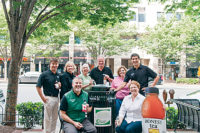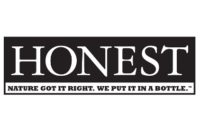Bethesda, Md.-based Honest Tea, a subsidiary of The Coca-Cola Co., Atlanta, released its 2012 mission report, “Keeping it Honest.” The third annual report details how the company is working to live up to its mission “to create and promote great-tasting, healthier, organic beverages” and extend economic opportunities to help communities in need. “Keeping It Honest,” which examines data from June 2011 to May 2012, is part of Honest Tea’s ongoing quest to live up to its mission and to be transparent about progress and setbacks toward this goal with respect to all aspects of the business.
“’Keeping It Honest’ helps ensure that all of our major decisions are reviewed annually through the lens of our mission,” said Co-Founder and TeaEO Seth Goldman in a statement. “We’d like to think that we always have our mission in mind as we operate, but it’s helpful to have this annual report to hold us accountable.”
The following are some of the highlights from the report:
● 354,322 pounds of wood pulp and other natural resources were conserved as a result of reducing the amount of cardboard in each Honest Kids carton by 0.56 ounces;
● 1,300 metrictons of carbon dioxide emissions are projected to be saved by transferring bottled beverage production to a facility 500 miles closer to the warehouse;
● 325,000 pounds of Fair Trade USA certified ingredients were purchased. Fair Trade premiums paid as a result of these purchases go directly to the communities where the ingredients are sourced and are invested in schools, better roads and electricity, vaccines, computers and buses; and
● 4,367,000pounds of organic ingredients were purchased in 2011, which is an increase of 13 percent compared with 2010 and up from the 790,000 pounds purchased in 2007. This growth is a result of the company’s efforts to democratize organics via expanded distribution.
The report also highlights a variety of mission-related initiatives, including an award-winning recycling initiative called The Great Recycle, community programs and partnerships, and more.
“This mission report is our most comprehensive to date,” said Cheryl Newman, vice president and deputy chief of mission, in a statement. “We were able to review a recent shift in our West Coast production through the lens of our 2011 Life Cycle Analysis. It’s a great example of being able to manage what we measure and more clearly understanding the environmental benefits of our decisions.”



